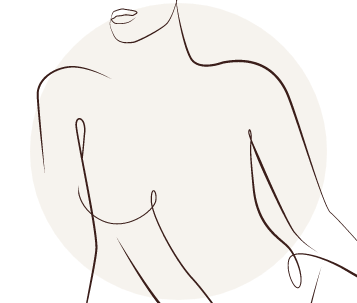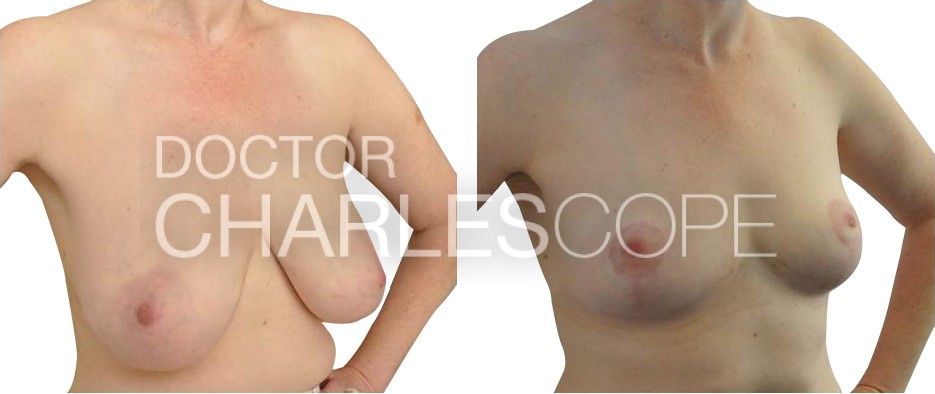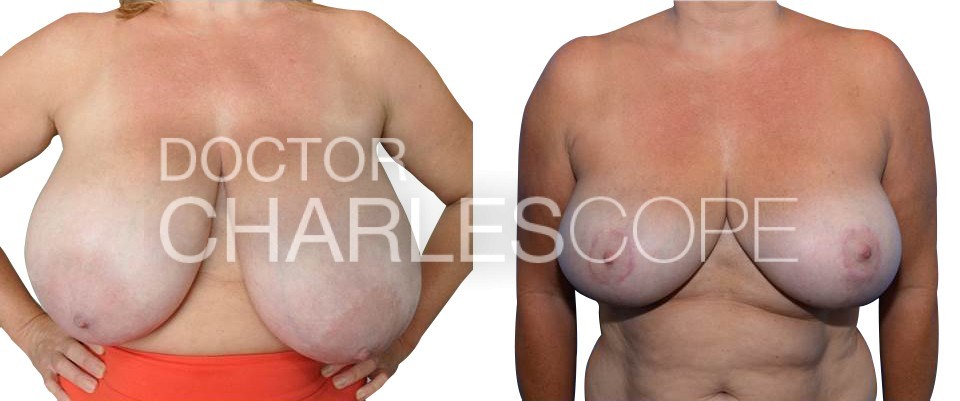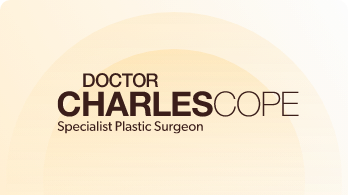Women with very large breasts can experience a variety of medical problems caused by their excessive weight and restrict their activites, making it difficult to swim, play sport and exercise.
The most common of these medical problems include back and neck pain, posture problems, skin irritation and rashes under the breasts and bra straps leaving indentations in their shoulders. Occasionally, overly large breasts can lead to skeletal deformities and breathing problems.
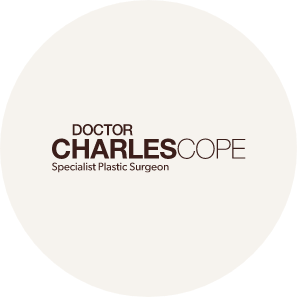
Breast reduction surgery removes fat, glandular tissue, and skin from the breasts, making smaller, lighter, and better-shaped breasts which are in proportion with the rest of the body.
It is usually performed after the breasts are fully developed, although Dr Cope occasionally operates on younger patients (less than 18) if it is medically necessary with very large breasts.
Preparation, Procedure and Aftercare for Breast Reduction Surgery
It is important to conduct a full breast history and examination prior to breast reduction surgery. A preoperative mammogram is done for older patients and patients with significant breast history.
Dr Cope insists on two preoperative consultations with you and your partner or parents to make sure you have realistic expectations. This involves showing you photos of other patients who have undergone similar surgery, providing reading material on the surgery, and ideally having you talk to a patient who has had the surgery before.
Dr Cope will also engage you in a detailed discussion of the variables affecting breast reduction surgery, which includes age and skin elasticity, and the size and shape of your breasts.
The size and position of the nipple and areola, and an estimate of final cup size is discussed, although an exact cup size cannot be predicted.
Breast reduction surgery requires a general anaesthetic, with the operation taking 2-3 hours, and it is usually performed as a day-stay or overnight-stay procedure*. Though it is often assumed that breast reduction surgery is a simple operation, considerable skill and experience is required to achieve a natural breast shape.
Dr Cope recommends that following surgery, it is important to restrict yourself to light activities for 10-14 days, with most patients able to drive again and return to work within two weeks of the surgery*. Heavy activities and sport should be avoided for one month following breast reduction surgery*.
The breasts tend to settle in the months after the breast reduction surgery, with the final breast shape occurring 3-6 months postoperatively*.
*Note results vary from patient to patient
Frequently Asked Questions
Breast reduction will improve symptoms of back or neck pain, rashes under the breasts, and will make it easier to be active, exercise, and get clothes to fit – anyone with these problems is a good candidate for breast reduction
The total costs of your breast reduction surgery can vary depending on a wide range of factors. These include the following:
Surgeon’s fees
This will depend on the surgeon’s skills and experience, but also on the amount of time your operation will take.
Anaesthetist’s fees
Your anaesthetist may charge by the hour or procedure.
Initial consultation fees
You’ll need to pay $380 when you first consult with your surgeon regarding the procedure, with a Medicare rebate of $73 if you bring a referral from your GP (price at July 2021).
The complexity of the surgery
This refers to the surgical techniques needed to achieve optimal results.
Your breast condition
This includes the amount of breast tissue you have and your skin condition.
Hospital fees
You may be charged depending on the length of your hospital stay.
Other costs
This may include the materials used, medical tests performed, and medications given during the entire procedure.
Medicare and private health may or may not cover the costs of your surgery. This usually depends on the reason for your procedure. If it’s performed to correct a health problem, you may be eligible to claim Medicare or insurance, in which case some private health funds may cover the hospital fees. Before your surgery, it is recommended to review the policy of your insurance provider.
During your consultation with Dr Cope, we will discuss all of the factors that may affect the total costs of your surgery. The total price of a breast reduction (including surgeon, anaesthetist, and hospital fees) can be anywhere from approximately $13,000 (if you are insured and your health fund covers the hospital fees) up to $17,500 (if you are not insured). During your consultation with Dr Cope, we will provide you with a more accurate estimate of the costs involved.
Breast reduction can be performed at any age from 14-70, whenever symptoms & difficulty exercising bothers you. If you are about to have children soon then you should wait until after pregnancy and breast feeding, as these often change your breasts and change the result of breast reduction – if you are young and this is many years away then this is not an issue. Many patients also have breast reduction after having children to correct changes that have occurred with pregnancy and breast feeding.
Breast reduction removes fat, glandular tissue, and skin from the breasts, making smaller and lighter breasts which are in proportion with the rest of the body.
A breast reduction may not be permanent. Your breasts are made up of hormonal breast tissue and fat, and changes in either of these can change the size of your breasts. Even if your weight is stable then hormonal changes such as pregnancy, breast feeding & menopause can cause your breast size to increase again, possibly requiring another operation.
Whatever type of breast reduction you have there will be a scar around the areola and vertically down from the areola to the crease under the breast. Patients with large or with a large amount of loose skin or breast ptosis (droop) also need a scar that runs along the crease under the breast. The commonest type of pattern is called a Wise pattern inferior pedicle reduction – although this has the scar in the crease under the breast it is the safest type of surgery, with lowest complication rate and gives you the best chance of breast feeding. There are other types of breast reductions, such as superomedial pedicle (Hall-Findlay) type, which do not have (or minimize) the scar running in the crease under the breast, but these have a higher complication & significant revision rate (20%).
There is a physical limit on how small you can reduce your breasts, as some of the breast tissue needs to be left attached to the nipple during the surgery. Breast reductions commonly reduce the breast to one half or even one third of their size*. For very large breasts e.g. G/H cup the limit of size reduction is down to approximately a D cup postoperatively, although postoperative cup size can’t be guaranteed*.
Most breast reduction techniques leave some of the breast tissue attached to the nipple, so the majority of patients can breast feed after a breast reduction, although this can’t be guaranteed (only about two-thirds of women can successfully breast feed even if they have never had an operation on their breasts). Studies of inferior pedicle breast reductions show the same breast-feeding rates as women without the operation*.
Liposuction (with only two 5mm scars per breast) can be used to reduce your breasts by about one cup, with the risk of having slightly loose skin or breast ptosis (droop) afterwards, but a large reduction is not possible with liposuction alone.
There is a Medicare rebate for breast reduction, which means that if you are insured your health fund may cover the hospital bed fee and theatre fee costs (depending on your level of insurance)
Breast reduction is performed under general anaesthetic in an accredited hospital, with nearly all patients staying in hospital overnight to recover from the anaesthetic as the operation takes 2-3hours.
It is normal for scars to be red, lumpy and obvious for 6-8 weeks after surgery. After this they gradually fade, with most people’s scars being white by one year, although uncommonly this process can take 2 or more years*. The simplest way to help this process is to keep tape such as Micropore tape or silicone tape on the scars for the first 3 months or so. An alternative to this is to massage the scars. Uncommonly, scars stay red and thick for months, requiring other treatments such as steroid injections or vascular lasers to help them fade.
During the first week after surgery you need to rest and take things quietly at home. When you go home there will be waterproof dressings covering your breasts, which normally stay on for one week, allowing you to shower normally. Most people find these dressings supportive, but if you find it more comfortable to wear a supportive sports bra that’s fine. Some people feel well enough to drive to the postoperative visit, which is usually 5-7 days later*. Most people return to office work 10 days after breast reduction*.
For most people it is 4 weeks until they are ready to return to sport and full activities*.
*Note results vary from patient to patient

